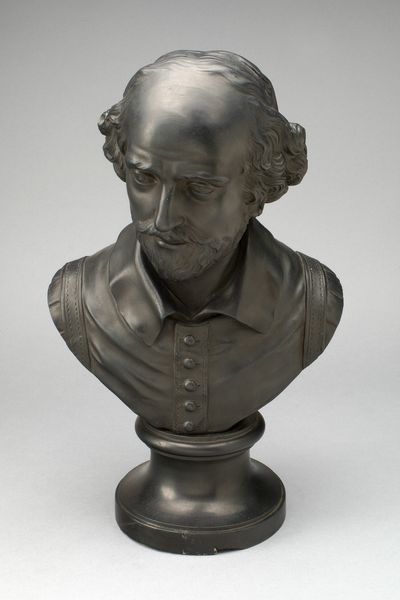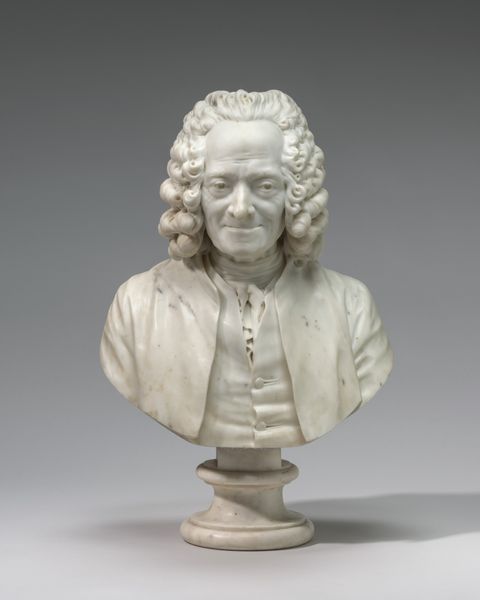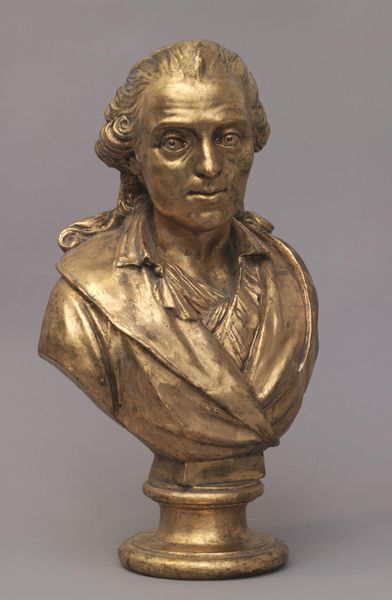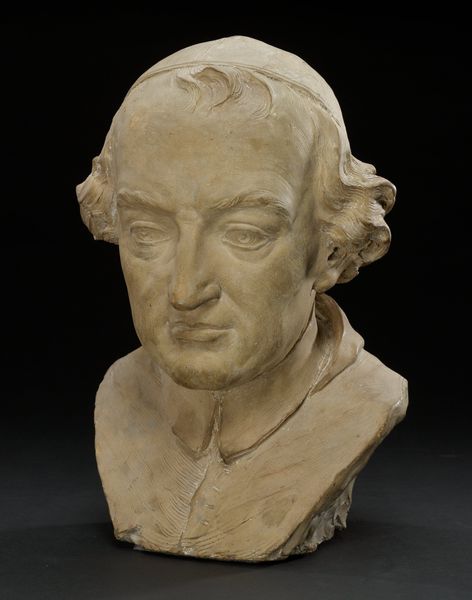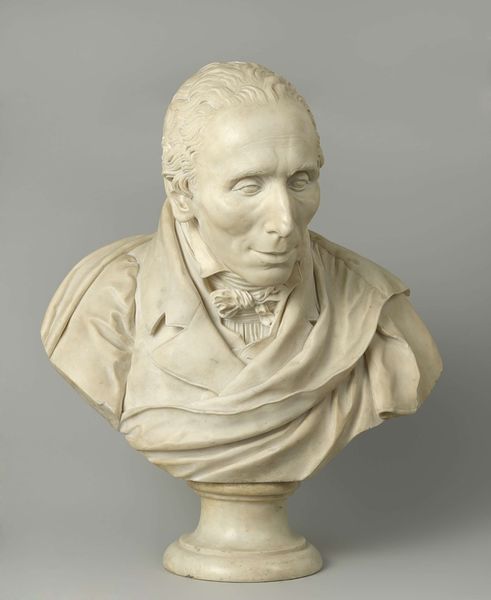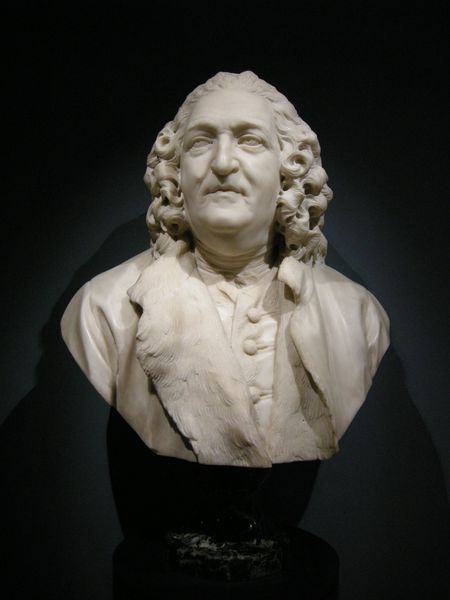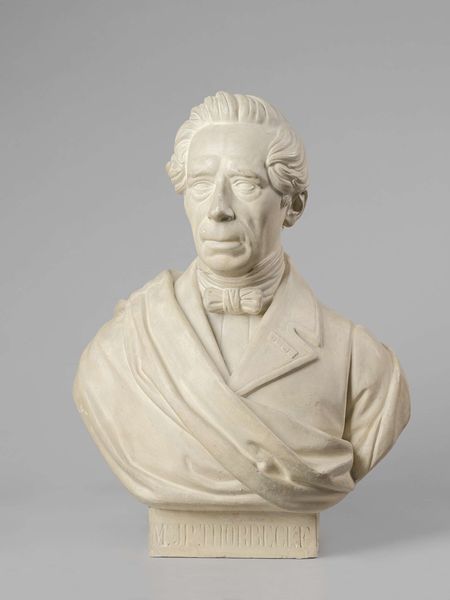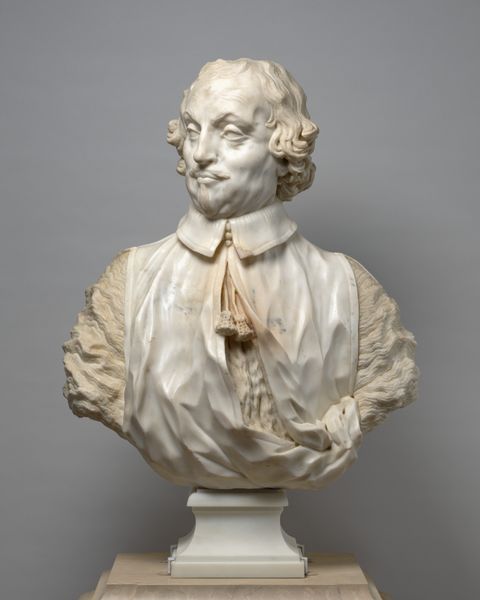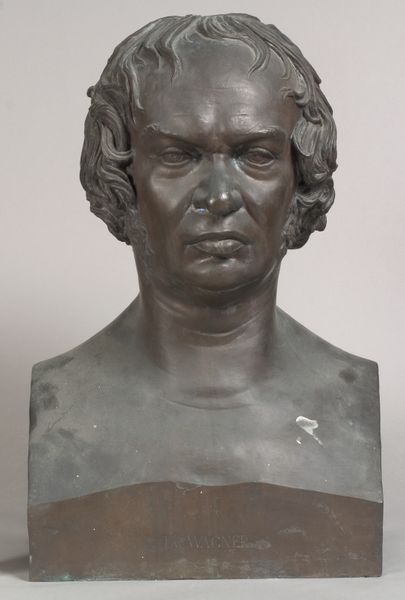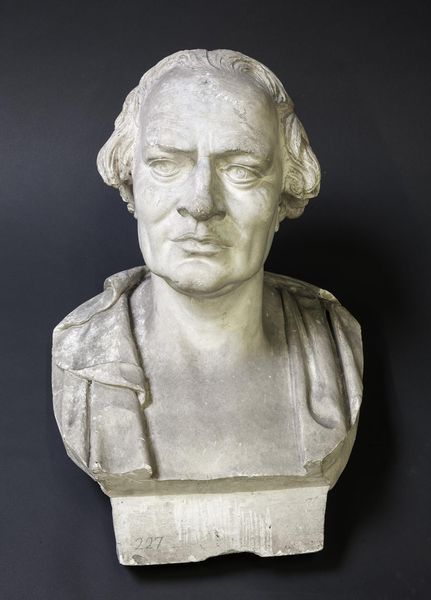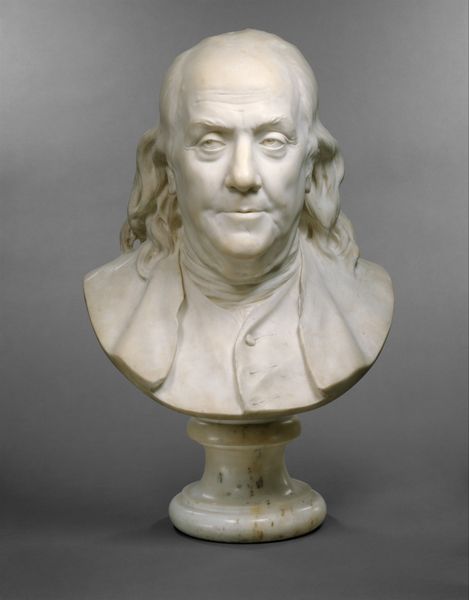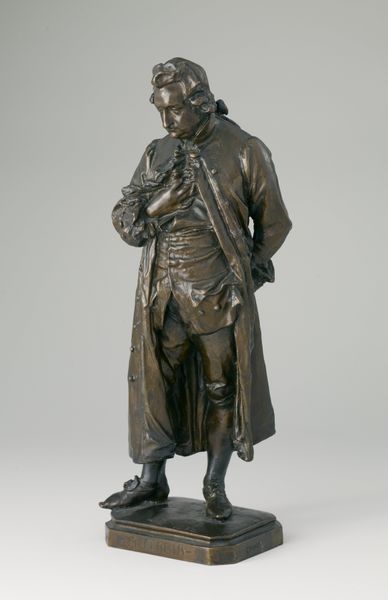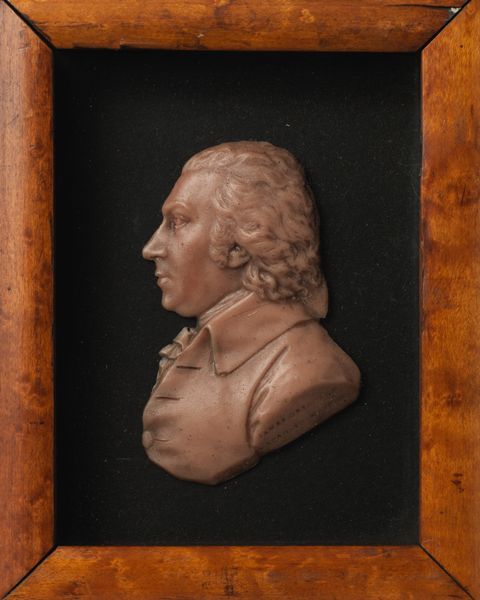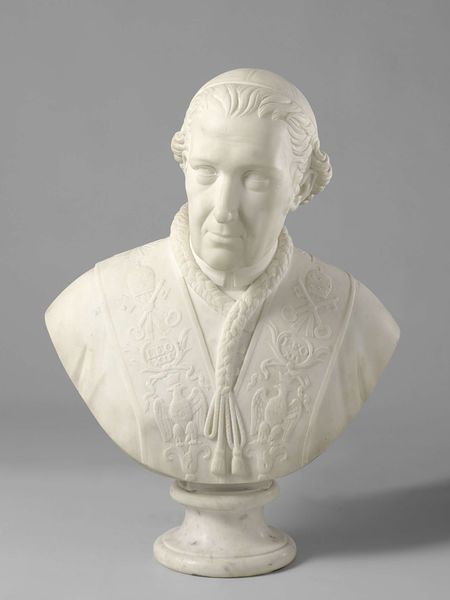
sculpture, marble
#
portrait
#
neoclacissism
#
sculpture
#
sculpting
#
sculpture
#
marble
Copyright: Public Domain
Curator: As you can see before you, we have a marble sculpture dating from the 19th century: a portrait of Jean-Jacques Rousseau. The original artist, Jean-Antoine Houdon, captured not just a likeness but, in some ways, the essence of this philosopher. It currently resides in the Minneapolis Institute of Art. Editor: Immediately, the serene gaze strikes me. There is almost a resigned wisdom there; he seems caught between eras. The gentle curves in the hair contrast so starkly with the almost severe lines of his jacket and buttons, very proper. Curator: Indeed. It embodies Neoclassical ideals. Rousseau was influential during both the Enlightenment and the French Revolution; his philosophies are very important, but as the work sits in this modern context it can tell us even more. Editor: I would venture that its mere presence reflects an enduring tension between individual freedom and social order that consumed his philosophies and which we are still grappling with in contemporary society. How does this specific work contribute to the narratives and socio-political debates surrounding art? Curator: His influence resonates through democratic movements and education reforms. However, there are points of contestation to be addressed and reflected upon within a contemporary sociopolitical scope: His vision often marginalized women. This calls into question how museums can approach an exhibit. It demands that a wider scope of research needs to be conducted, displayed, and recognized to fully do this exhibit justice. Editor: The bust serves as a complex reminder. Recognizing its historical context alongside the points you mentioned surrounding inclusivity. We can actively promote conversations about accountability and historical interpretation. The bust really presents us with an invitation for collective dialogue. Curator: Absolutely. The marble is more than art. It is a moment frozen in history, urging us to continually examine and reshape how we engage with the past and how we construct the future. Editor: Ultimately, what can be learned is our own understanding and willingness to examine a larger, intersectional perspective. It forces us to critically assess and really move towards action.
Comments
No comments
Be the first to comment and join the conversation on the ultimate creative platform.
